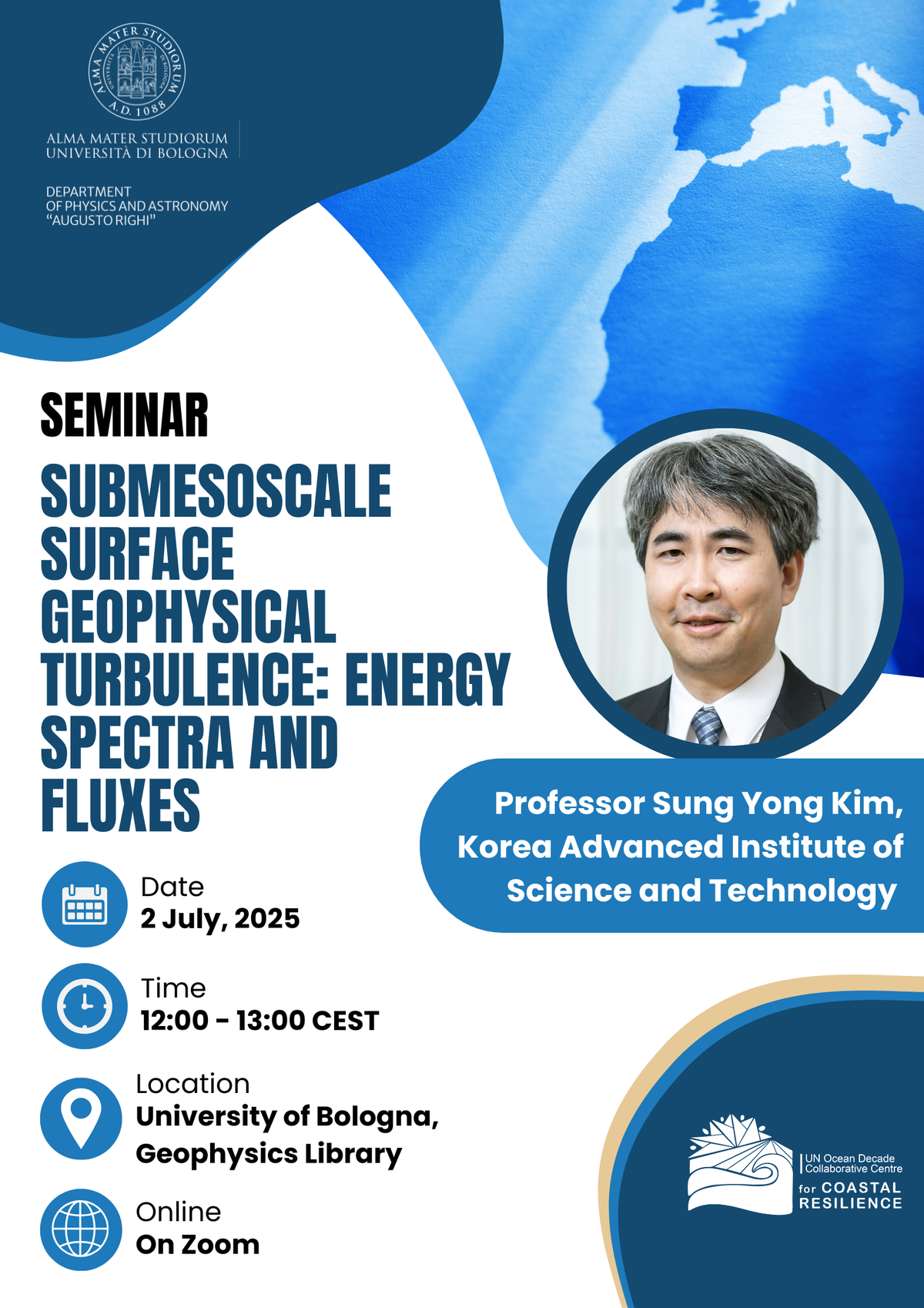Submesoscale Ocean Turbulence in Focus: Upcoming Seminar by Prof. Sung Yong Kim
2 July 2025 | 12:00–13:00 CEST | In-person & Online

-
Date: 02 JULY 2025 from 12:00 to 13:00
-
Event location: University of Bologna Geophysics Library, Viale Berti Pichat 8 - In presence and online event
-
Type: Webinars
On July 2, the Decade Collaborative Centre for Coastal Resilience, in collaboration with the Department of Physics and Astronomy of the University of Bologna is pleased to host a seminar by Associate Professor Sung Yong Kim (KAIST – Korea Advanced Institute of Science and Technology).
The event will take place from 12:00 to 13:00 CEST, in hybrid format: in person at the Geophysics Library, University of Bologna, and online via Zoom.
Title: Submesoscale surface geophysical turbulence: Energy spectra and fluxes
Associate Professor, Sung Yong Kim, Environmental Fluid Mechanics Laboratory, Department of Mechanical Engineering, Korea Advanced Institute of Science and Technology (KAIST), Republic of Korea
Abstract:
This talk presents submesoscale surface geophysical turbulence studies, focusing on energy spectra and energy fluxes, based on remotely sensed observations such as altimetry, geostationary ocean color imagery, and high-frequency radars at the O(1)-km spatial resolution and O(1) hour temporal resolution. The dynamics of surface currents are governed by tides, winds, the Coriolis force, low-frequency pressure gradients (less than 0.4 cycles per day), and nonlinear interactions among these forces. The kinetic energy spectra of the surface currents in the wavenumber domain (k) become steeper at a scale of approximately 10 km from a slope of k-5/3 to slopes between k-2 and k-3 at a length scale of 2 km. Moreover, the energy spectra of chlorophyll exhibit anisotropy associated with bathymetric effects and regional circulation, and their decay slopes change from k-5/3 to k-1 at scales of O(10) km and from k-1 to k-3 at scales of O(1) km, which is consistent with the two-dimensional quasi-geostrophic turbulence theory. The spectral decay slopes of these energy spectra show weak seasonality, which can be interpreted by the baroclinic instability in the weak seasonal mixed layer and the persistent and non-seasonal regional circulations.
Link to Zoom Event
